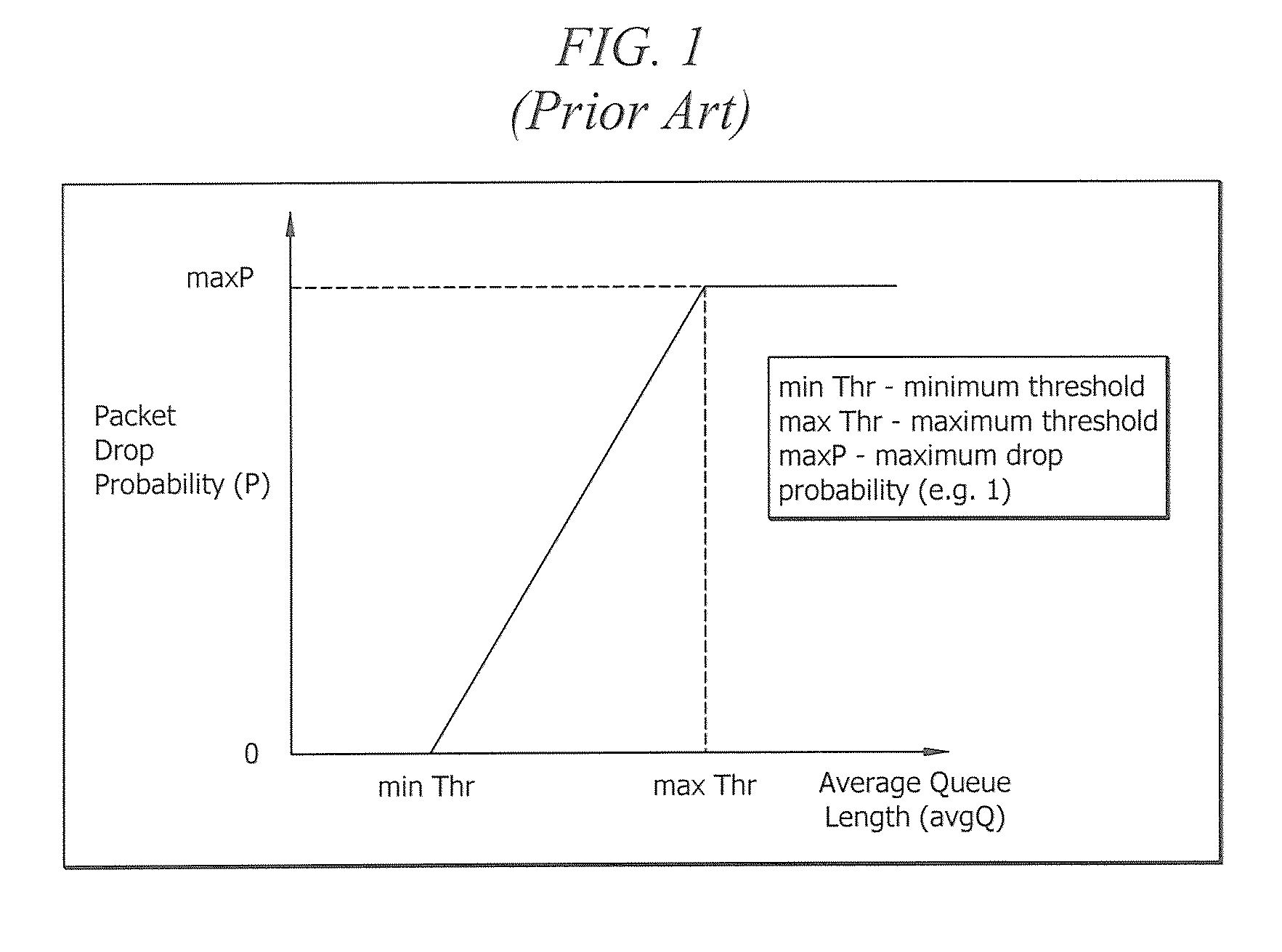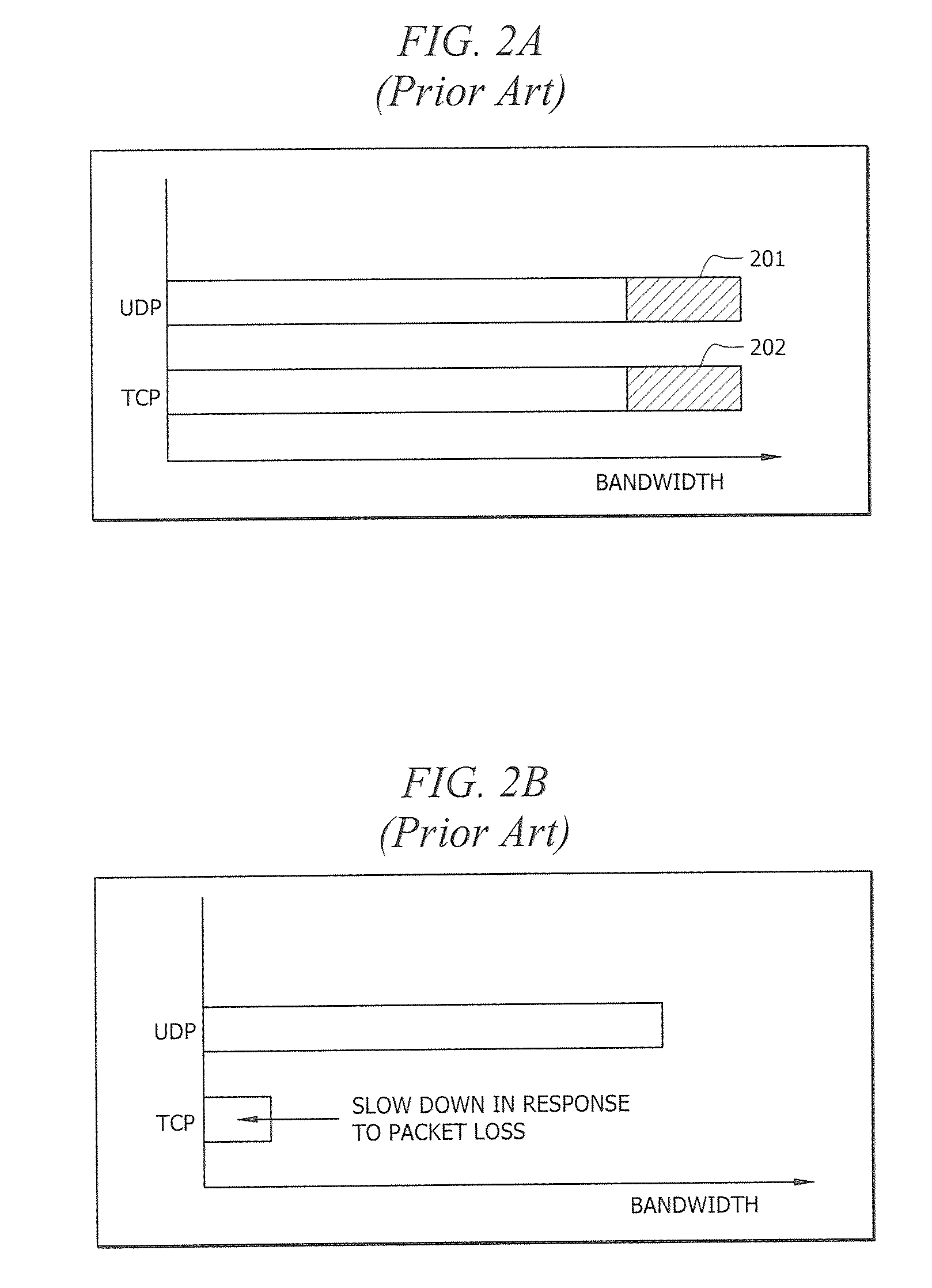Fair weighted network congestion avoidance
a network congestion and fair weighting technology, applied in the field of communication, can solve problems such as communication session or connection drop, network congestion, and unacceptable traffic impa
- Summary
- Abstract
- Description
- Claims
- Application Information
AI Technical Summary
Benefits of technology
Problems solved by technology
Method used
Image
Examples
Embodiment Construction
[0030]Directing attention to FIG. 5, a communication system adapted according to an embodiment of the present invention is shown. Specifically, communication system 500 of the illustrated embodiment includes network 510 facilitating communication between network nodes 520 and 530. Network 510 may comprise the Internet, an intranet, an extranet, a local area network (LAN), a metropolitan area network (MAN), a wide area network (WAN), a satellite communication network, a cable transmission network, the public switched telephone network (PSTN), and the like, as well as combinations thereof. Communication links provided by network 510 may comprise wireline links, wireless links, optical links, etc. Network 501 of the illustrated embodiment comprises network nodes 511-513, such as may comprise switches, routers, gateways, servers, terminals, etc., facilitating network communications and / or providing communication of information. Such network nodes are preferably processor-based systems, ...
PUM
 Login to View More
Login to View More Abstract
Description
Claims
Application Information
 Login to View More
Login to View More - R&D
- Intellectual Property
- Life Sciences
- Materials
- Tech Scout
- Unparalleled Data Quality
- Higher Quality Content
- 60% Fewer Hallucinations
Browse by: Latest US Patents, China's latest patents, Technical Efficacy Thesaurus, Application Domain, Technology Topic, Popular Technical Reports.
© 2025 PatSnap. All rights reserved.Legal|Privacy policy|Modern Slavery Act Transparency Statement|Sitemap|About US| Contact US: help@patsnap.com



